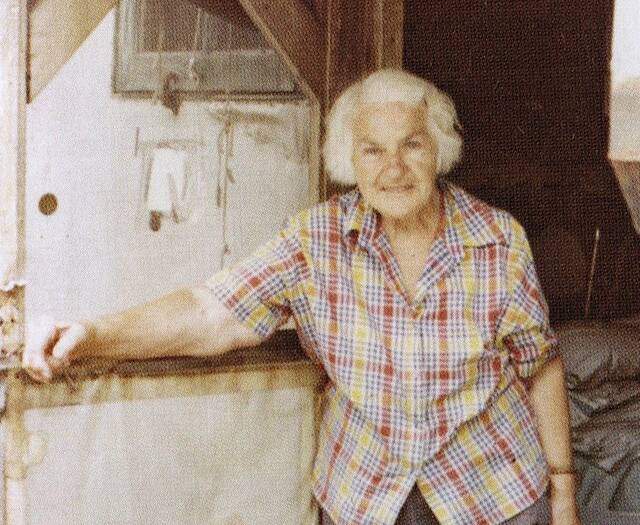Born on May 6, 1907, in Arnold, Pennsylvania, Dorothy was the third of six children born to John "Cap" and Mattie Molter. When her mother died on May 22, 1915, Dorothy and her siblings were placed in a Cincinnati orphanage. This arrangement kept the children together while allowing their father to visit during his railroad leaves. In 1919, "Cap" remarried, reunited with his children, and moved the family to Chicago, Illinois.
In 1924, Dorothy entered Calumet High School, where she participated in tennis, swimming, basketball, and rifle teams. After graduating, she attended Auburn Park Hospital Nursing School to pursue a nursing career. In summer 1930, she made her first visit to Knife Lake, accompanying her father on a fishing trip to Bill Berglund's Isle of Pines resort. Her father had originally planned to go with his wife, brother, and two friends, but when one friend canceled, Dorothy took his place.
The culture shock was immediate. As a big-city outsider, Dorothy was unfamiliar with these isolated surroundings. However, she was fearless and embraced challenges, quickly falling in love with the area. During this visit, she helped out at the resort and returned each season until 1934, when—unable to find nursing work in Depression-era Chicago—she agreed to assist owner-operator Berglund year-round. She provided nursing care, managed his diabetes, and treated paddlers' injuries. When Berglund died in March 1948, Molter became the lodge's owner, as he had wished.
In 1948, lawmakers passed the Thye-Blatnik Act, which authorized the U.S. Forest Service to purchase resorts and private land within the future Boundary Waters Canoe Area Wilderness. The legislation aimed to preserve the area's beauty while compensating local counties for lost tax revenue. The Forest Service approached Molter, but she declined to sell.
On December 17, 1949, President Harry S. Truman issued an executive order prohibiting aircraft from flying below 4,000 feet over the Superior Roadless Area (SRA), which included the Boundary Waters Canoe Area. The order took effect on January 1, 1951. After years of relying on float planes to transport supplies to resorts, the new regulations forced owners—including Dorothy—to find alternative supply methods.
A few non-compliant local pilots continued delivering supplies after the ban, but by 1952 the practice had ended. Uncomfortable with portaging heavy supplies to her resort—especially pop bottles—Molter began making her own root beer. This practice earned her the moniker "The Root Beer Lady," and this, coupled with her dispute with the U.S. Forest Service over her resort land, made her a Northwoods celebrity.
The Saturday Evening Post featured an article about Dorothy Molter in its October 18, 1952 issue, titled "The Loneliest Woman in America." Ironically, despite her physical isolation, Molter was far from alone. Each season, between 6,000 and 7,000 people signed her resort's guestbook—a testament to the steady stream of visitors she welcomed.
In 1964, the Wilderness Act formally established the Boundary Waters Canoe Area, making it illegal for Molter to continue running her resort. Supporters from across the country petitioned for her right to remain on her land, and in 1972 their efforts succeeded when Congress granted her lifetime tenancy. From 1976 to 1986, Dorothy and her helpers continued brewing her famous root beer, producing more than 10,000 bottles each summer.
On December 18, 1986, Molter—the last non-indigenous full-time resident of the Boundary Waters Canoe Area Wilderness—died of natural causes at her resort. She is buried beside her mother in Pennsylvania. Her gravestone bears the epitaph "Nightingale of the Boundary Waters."
 Minnesota Then
Minnesota Then
